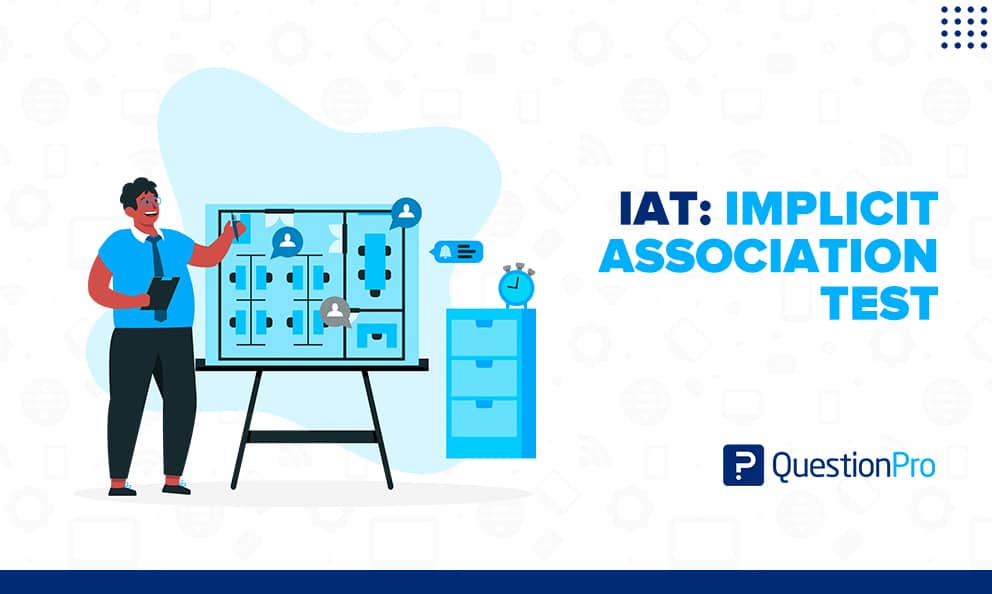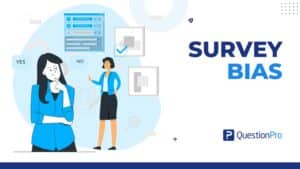
Are you looking for tests that allow you to uncover people’s unconscious attitudes? The Implicit Association Test can be your best option.
In this article, you will find information about what it entails, what types of data it yields, its characteristics, and how to conduct it.
What is an Implicit Association Test?
The Implicit Association Test (IAT) is a psychological test that aims to reveal unconscious or implicit attitudes, automatic preferences, and hidden biases in individuals by measuring the time it takes for an individual to categorize concepts into two categories.
The test was developed to overcome biases that arise from directly asking someone about their inherent prejudices or automatic preferences, as this does not yield accurate information or information that is not altered by various mechanisms, such as social desirability bias or other cognitive biases.
The Implicit Association Test measures the strength of associations between concepts and evaluations or stereotypes and is one of the most commonly used indirect measures to understand implicit models of social cognition in various areas of psychological research, such as organizational psychology.
An important aspect of the IAT is that it does not require introspective exercises from the participant, allowing for responses that are less filtered.
Importance of conducting an Implicit Association Test
The association test allows us to uncover attitudes that people do not consciously recognize, often revealing issues related to their mental or emotional state.
Implicit attitudes are underlying byproducts of past experiences that influence how we feel about something.
They are cognitive processes that are always present in the background of our subconscious, even when we are not aware of them. These biases can influence cognitive processes such as self-esteem, memory, perception, and attitudes, among others.
To overcome these biases, we first need to identify those implicit associations, and that’s what the Implicit Association Test helps us achieve.
How does the Implicit Association Test work?
The test is based on how our brain processes information, which is partly explained by a dual-process model that distinguishes between a propositional processing system and an associative system.
The associative system, or fast pathway, corresponds to the spread of activation processes and operates quickly but with limited conscious accessibility.
The Implicit Association Test aims to measure the fast pathway, suppressing and eliminating responses contaminated by conscious thoughts.
While asking someone how they feel about something yields their explicit attitude corresponding to the propositional system, which can be affected by response biases, the Implicit Association Test aims to reveal implicit attitudes by tapping into the associative system.
You may also be interested in: Personality Survey What it is and how to create one.
How is the Implicit Association Test administered?
Generally, the administration of this psychological survey is done as follows:
- A series of stimuli (words and/or images) is presented to each participant, who must categorize them into two categories as quickly as possible.
- The key assumption underlying any test is that the stronger the association an individual makes between two concepts, the faster they will make these associations.
- Since the Implicit Association Test is performed by the individual privately and quickly, it is more likely to shed light on beliefs that people are not usually willing to discuss.
Key characteristics of an IAT
Some key characteristics that an Implicit Association Test should have are:
Concrete response tasks
Each categorization task should have a clear, correct response that is easy to recognize quickly.
This is crucial as the Implicit Association Test relies on differences in speed in “visceral reactions.” If a participant takes too long to respond to a stimulus, that observation is eliminated from the scoring. The ability to compute an error index is also crucial for testing and eliminating outliers.
Identifiable stimuli
Participants should be familiar with the stimuli samples to be able to recognize what is being shown in the image. Pairs of photographs can be chosen with similar clustering, lighting, angle, etc.
The differences to be highlighted should be clearly distinguishable in the element that is intended to emphasize the association.
Discover the Best Questions for a Psychology Questionnaire.
Categories of the same level
Similar steps are also required to select the words that should be used to identify the association concepts or categories.
It is important for these words to belong to similar levels of language (e.g., formal versus informal) so that differences in reaction times can be attributed to differences in the concepts.
It is also important to eliminate high-level vocabulary that not all participants may easily understand, as well as words that are prone to misinterpretation on the screen, and to avoid offensive words.
Benchmarking
Like many observational measures, the Implicit Association Test could represent other things that differ from the implicit attitude we are interested in measuring.
There are two things that can help rule out competing mechanisms:
- Designing a complementary IAT to test an alternative hypothesis.
- Adding a standard Implicit Association Test to your instrument.
You can also conduct a survey on explicit attitude measures to compare them.
Data provided by the Implicit Association Test
After completing the Implicit Association Test, individuals receive a response indicating that they have an implicit preference for a certain type of association.
The labels “slight,” “moderate,” and “strong” reflect the strength of the implicit preference based on the speed of responding to one association versus another.
Although results are unlikely to change drastically from one test to another, some variation is expected.
The results of the IAT can be influenced by factors related to the test (e.g., category labels or the images/words used to represent the categories in the IAT) or factors related to the person taking the test (e.g., level of fatigue).
Typically, the data collected by this test is used by researchers, educators, and various sectors to gain a better understanding of attitudes and stereotypes when undertaking socially-oriented projects.
Conclusion
As you can see, the Implicit Association Test can be highly useful in the field of psychology, social research, and human resources.
If you would like to implement it through a tool that helps you program the questions with the necessary images, ideal timing for each survey, and multiple online and offline distribution methods, QuestionPro can be the best option for you.
Create a free account or let us know your needs through an online demo. We are here to help you!







